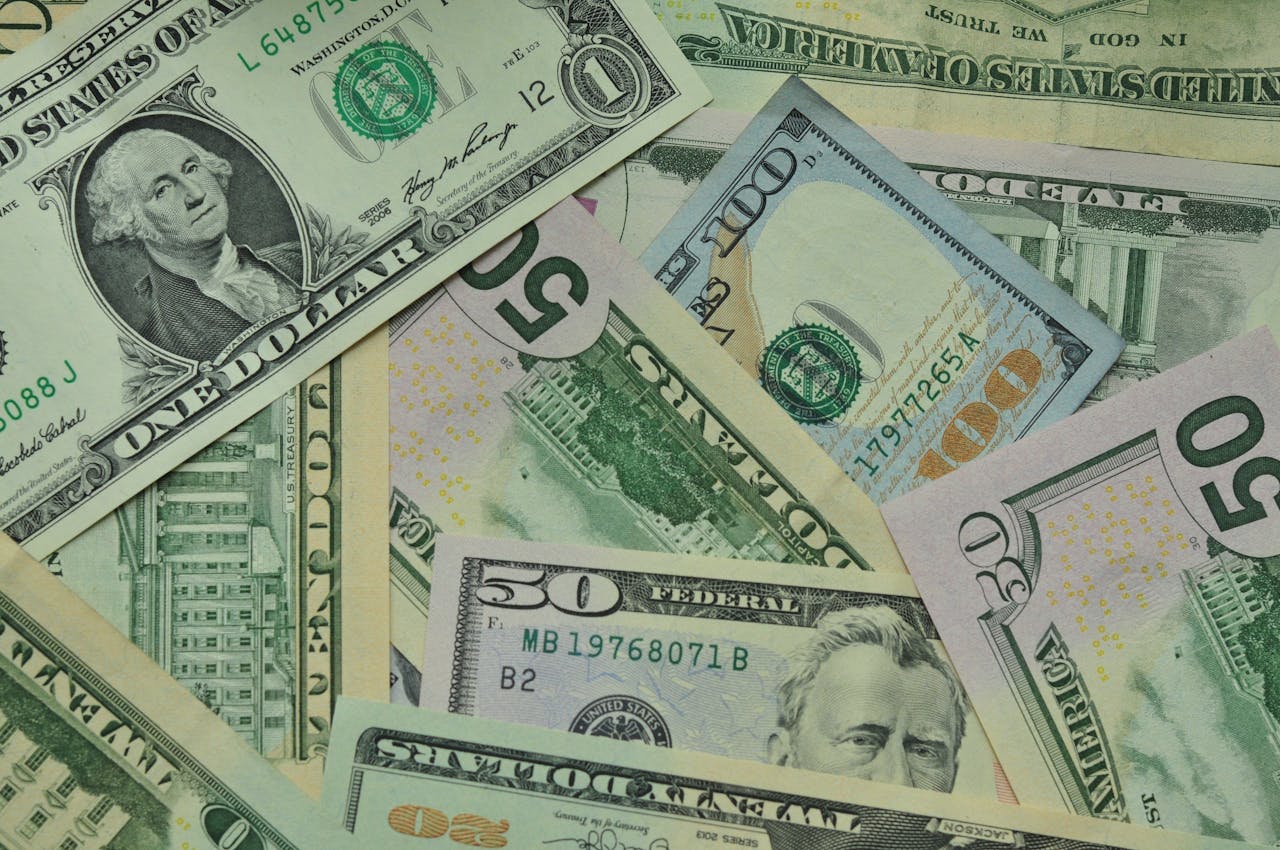In the grand chessboard of the global economy, every fluctuation in the U.S. dollar feels like a domino, triggering ripple effects across nations—from commodity prices to trade balances to everyday life. Between late 2024 and mid-2025, the U.S. Dollar Index oscillated between 95 and 108, stirring noticeable turbulence worldwide.
1. Why Does the USD Exchange Rate Fluctuate?
The U.S. dollar exchange rate simply refers to how much foreign currency one dollar can buy. It moves based on several key factors:
- Federal Reserve Policy: Rate hikes → dollar strengthens; rate cuts → dollar weakens. In early 2025, the Fed maintained high interest rates (5.25%), keeping the dollar robust.
- Inflation and Employment Data: In April 2025, U.S. CPI rose 3.4% year-over-year—slightly higher than expected, fueling expectations for prolonged rate hikes and pushing the dollar upward.
- Global Risk Sentiment: When geopolitical tension rises (e.g. Ukraine, Middle East), investors flee to dollar-denominated assets, driving up its value.
- Fiscal Health and Deficits: A swelling U.S. fiscal deficit can erode investor confidence and weaken the dollar.
These forces interact dynamically, shaping the dollar’s trajectory daily.
2. What Happens When the Dollar Strengthens?
A stronger dollar behaves like a money magnet, creating shockwaves across global markets:
2.1. Emerging Markets Under Stress
Many countries owe debt in U.S. dollars. As the dollar appreciates, repaying becomes more expensive. For example, Argentina’s peso depreciated 15% against the dollar in early 2025, intensifying debt repayment pressure.
2.2. Commodity Prices Drop
Oil, copper, and gold are priced in dollars. A stronger dollar → commodities become more expensive globally → demand falls → prices decline. As of May 2025, Brent crude fell to $77 per barrel, down 9% from January.
2.3. Competitive Devaluation
To maintain exports, some nations allow their currencies to weaken. Japan’s yen slid to 155 against the dollar in April 2025—its lowest level in 34 years.
3. What Happens When the Dollar Weakens?
A weaker dollar doesn’t necessarily mean everyone benefits:
3.1. U.S. Import Costs Rise
Many consumer goods, like iPhone components and auto parts, are imported. A weaker dollar raises import prices → corporate profits shrink → inflation risk spikes.
3.2. Capital Flows Back to Emerging Markets
Weaker dollars push capital out of the U.S. and into high-growth economies. In Q1 2025, India drew $36 billion in FDI—a 24% year-over-year increase.
3.3. Surge in Gold and Bitcoin
A weak dollar often signals falling confidence in fiat currency. Investors pivot to “hard assets.” In May 2025, gold surpassed $2,300/oz and Bitcoin returned to $70,000.
4. Impact on China and Europe
China: Yuan Faces Pressure, Exports Benefit
The yuan hit 7.25 per USD in April 2025. While this aided Chinese exporters (exports up 8.9% YoY), it also raised import costs and pressured domestic industrial prices.
Europe: Energy Costs and Inflation Spike
The EU imports energy priced in dollars. A stronger dollar increases import bills. In 2025, Germany’s inflation rebounded to 3.2%, casting doubt on whether the ECB can cut rates.
5. What Does It Mean for Ordinary People?
Even if you don’t trade currencies or invest, exchange rate shifts still affect your wallet:
5.1. Shopping Abroad Gets Pricier
When the dollar strengthens, iPhones cost more, U.S. college tuition rises, and European travel feels heavier on the budget.
5.2. Overseas Investments Fluctuate
Got U.S. stocks or dollar-based investments? A stronger dollar = higher asset value; weaker dollar = currency risk to watch.
5.3. Prices of Imported Goods Change
Coffee beans, baby formula, semiconductors—products dependent on imports often rise in price when the dollar strengthens.
6. What’s Next for the U.S. Dollar in 2025?
Most analysts expect mixed trends for the dollar in late 2025:
- If the Fed holds rates steady and economic data remains strong → dollar stays strong.
- If inflation cools and growth slows → dollar may plateau or decline.
At its core, the exchange rate reflects investor confidence and interest rate dynamics. Every swing tells a story of shifting capital and economic strength.
7. FAQ
7.1. Why does the U.S. dollar exchange rate affect the global economy so much?
Because the U.S. dollar is the world’s primary reserve and trade currency. Over 80% of global trade is settled in USD. So when the dollar goes up or down, it impacts everything from commodity prices to international debt repayments.
7.2. How does a strong dollar impact inflation in other countries?
A strong dollar makes imports more expensive for countries whose currencies weaken. This can lead to higher consumer prices and imported inflation, especially in countries that heavily rely on dollar-priced goods like oil or food.
7.3. Who benefits when the dollar gets stronger?
- U.S. tourists traveling abroad (your dollars go further)
- U.S. importers buying foreign goods
- Foreign investors holding dollar-denominated assets
But emerging markets and U.S. exporters may struggle due to rising costs or weaker demand.
7.4. How does a weaker dollar affect gold and Bitcoin?
When the dollar weakens, investors often seek safe-haven assets. Gold and Bitcoin typically rise as people look for protection against currency depreciation. That’s why in 2025, both assets spiked when dollar confidence dipped.
7.5. What should individual investors do during big exchange rate swings?
Diversify. If you’re U.S.-based, consider hedging against dollar risk by holding some foreign assets, gold, or inflation-protected instruments. If you’re outside the U.S., monitor how exchange rate changes affect your imported expenses and investments.
Whether you’re an exporter, global shopper, or casual investor, exchange rates aren’t just a technical metric—they’re daily signals of where the world economy is heading. In 2025, the global rhythm is largely dictated by the silent pull of the dollar.



